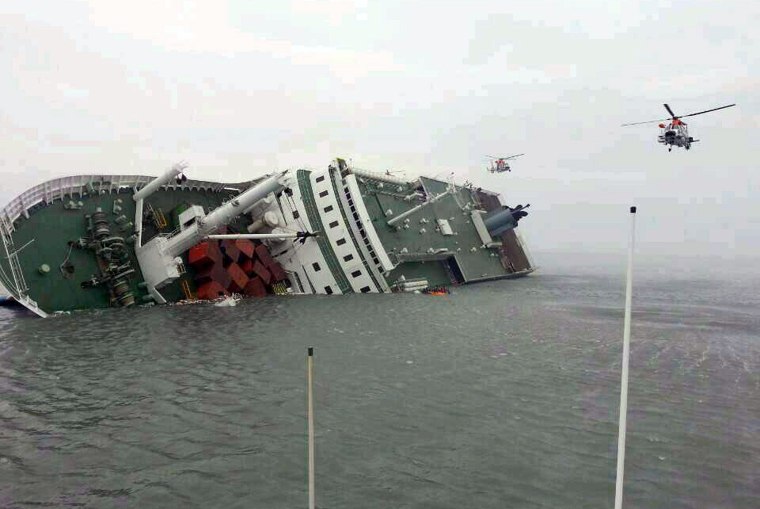The doomed ferry Sewol exceeded its cargo limit on 246 trips — nearly every voyage it made in which it reported cargo — in the 13 months before it sank, according to documents that reveal the regulatory failures that allowed passengers by the hundreds to set off on an unsafe vessel.
And it may have been more overloaded than ever on its final journey.
One private, industry-connected entity recorded the weights. Another set the weight limit. Neither appears to have had any idea what the other was doing. And they are but two parts of a maritime system that failed passengers April 16 when the ferry sank, leaving more than 300 people missing or dead.
The disaster has exposed enormous safety gaps in South Korea's monitoring of domestic passenger ships, which is in some ways less rigorous than its rules for ships that handle only cargo. Collectively, the country's regulators held more than enough information to conclude that the Sewol was routinely overloaded, but because they did not share that data and were not required to do so, it was practically useless.
The Korean Register of Shipping examined the Sewol early last year as it was being redesigned to handle more passengers. The register slashed the ship's cargo capacity by more than half, to 987 tons, and said the vessel needed to carry more than 2,000 tons of water to stay balanced.
But the register gave its report only to the ship owner, Chonghaejin Marine Co. Ltd. Neither the coast guard nor the Korean Shipping Association, which regulates and oversees departures and arrivals of domestic passenger ships, appear to have had any knowledge of the new limit before the disaster.
"That's a blind spot in the law," said Lee Kyu-Yeul, professor emeritus at Seoul National University's Department of Naval Architecture and Ocean Engineering.
Chonghaejin reported much greater cargo capacity to the shipping association: 3,963 tons, according to a coast guard official in Incheon who had access to the documentation but declined to release it.
